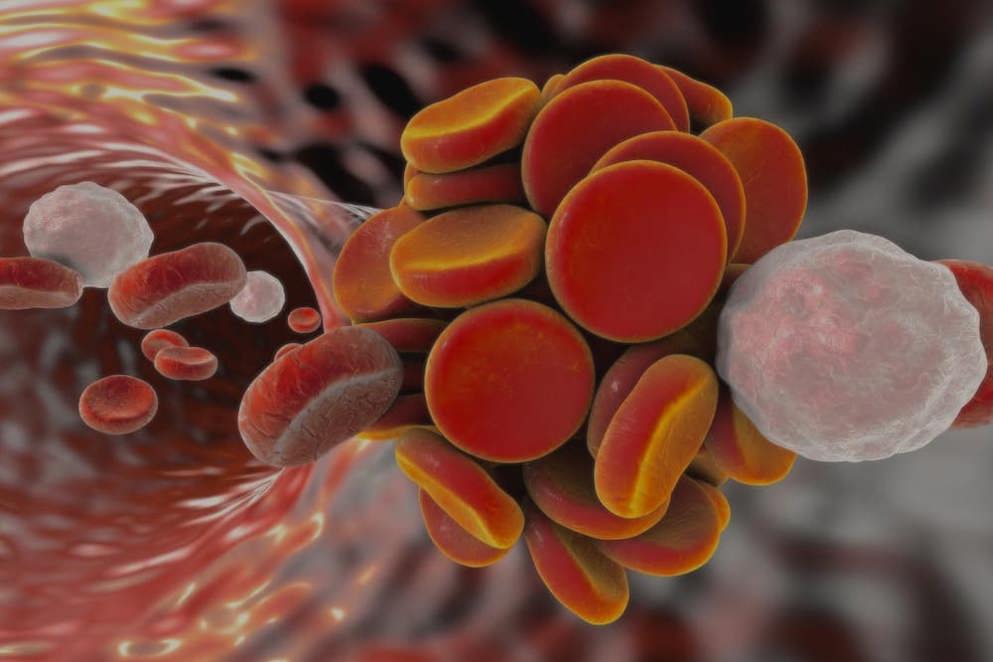
Improving diagnosis and treatment decisions?
How is technology improving diagnosis and informing treatment decisions?
The 21st century is seeing the rise of the machine with the development of applications and technology that can help inform patient diagnosis and treatment.
Technologies that enhance the abilities of healthcare professionals are already making waves in research across the world, such as the heightened interest in the utility of mHealth tools in shared decision making between atrial fibrillation (AF) patients and their clinicians when balancing the risks of venous thromboembolism12.
But can new technologies, like AI, replace doctors?
To answer this question, here’s another quick rundown of technologies that could transform healthcare; this time in the diagnosis of patients needing anticoagulation therapy.
The race to apply new technologies that improve and miniaturise bedside diagnostic testing is rapidly accelerating.
Recently, Maji et al. described the design, fabrication, and testing of a microfluidic sensor for dielectric spectroscopy of human whole blood during coagulation3. This ‘ClotChip’ measures a patient’s bleeding-risk profile, such as the bleeding risks associated with vitamin K antagonists, at the bedside from a drop of blood.
This new hand-held device offers the potential of a point-of-care platform to assess blood coagulation and platelet activity using <10 μL of human whole blood. The bedside assessment of human whole blood could allow for the rapid reversal of oral anticoagulants with medications, such as prothrombin complex concentrates.
Similar advancements have also been made by Tripathi et al. using the iCoagLab device for blood coagulation profiling of patients with elevated risk for bleeding4 and Luna et al. using a tortuosity-powered microfluidic device for assessment of thrombosis and antithrombotic therapy in whole blood5.
As technology becomes ever smaller and more efficient, more advanced tests will be able to be performed at the bedside, both saving time and improving patient care. Speaking of small technology…
Currently, oral vitamin K antagonists (VKAs) and non-vitamin K oral anticoagulants (NOACs) are prescribed for excessive blood coagulation as well as to treat conditions such as:
However, anticoagulant use can be limited due to the potential bleeding risks of these anticoagulant medications.
This is driving the need for novel therapies that can inhibit blood clotting while reducing the risk of bleeding. A recent development in this field has been the development of a new lab-on-a-chip technology by Szydzik et al.6.
The active micropump-mixer can rapidly screen antiplatelet drugs like aspirin in whole blood in a short amount of time, revealing their effect in the blood and highlighting the compounds with the greatest clinical utility.
The small chip utilises microfluidic technology to precisely and flexibly manipulate fluids and then uses a sensitive assay for analysing how specific compounds impact the complex blood coagulation cascade.
Lab-on-a-chip technologies can greatly speed up the repetitive screening of compounds and generate huge amounts of data on their utility. However, to sort through vast amounts of data efficiently, research has needed to start looking towards our A.I. counterparts…
Platelet aggregation is initiated by various agonists, however until now these agonists have been indistinguishable. A new study by Zhou et al. describes a sophisticated convolutional neural network trained by high-throughput flow cytometry of blood cells to identify and differentiate morphological features of platelet aggregates activated by different types of agonists7.
To demonstrate the utility of this network, Zhou et al. applied it to blood samples of four healthy human subjects to predict the contribution of each agonist type to platelet aggregates. The network was able to differentiate single platelets and platelet aggregates as well as the agonist types of the platelet aggregates.
Named the intelligent platelet aggregate classifier (iPAC), the tool could help illuminate the underlying mechanisms of platelet aggregation, provide the ability to identify the type of platelet aggregates in the blood stream, and help to inform the treatment decisions.
So, will AI and other technologies replace healthcare professionals? It is hard to predict what the future will bring.
But as these digital innovations become increasingly cheaper and more accurate, their ever-growing presence in the healthcare setting will continue improve patient diagnosis, inform treatment decisions, and help patients to live long and healthy lives.
If you found this interesting, you may also enjoy reading about a new perioperative anticoagulation strategy for lung transplantation or find other recent publications on anticoagulation and its reversal by visiting our publication digests section.
of interest
are looking at
saved
next event
References
- Zeballos-Palacios CL, Hargraves IG, Noseworthy PA, Branda ME, Kunneman M, Burnett B, et al. Developing a Conversation Aid to Support Shared Decision Making: Reflections on Designing Anticoagulation Choice. Mayo Clin Proc. 2019;94(4):686–696.
- Kunneman M, Branda ME, Hargraves IG, Sivly AL, Lee AT, Gorr H, et al. Assessment of Shared Decision-making for Stroke Prevention in Patients with Atrial Fibrillation: A Randomized Clinical Trial. JAMA Intern Med. 2020. doi:10.1001/jamainternmed.2020.2908.
- Maji D, Suster MA, Kucukal E, Sekhon UDS, Gupta A Sen, Gurkan UA, et al. ClotChip: A Microfluidic Dielectric Sensor for Point-of-Care Assessment of Hemostasis. IEEE Trans Biomed Circuits Syst. 2017;11(6):1459–1469.
- Tripathi MM, Tshikudi DM, Hajjarian Z, Hack DC, Van Cott EM, Nadkarni SK. Comprehensive Blood Coagulation Profiling in Patients Using iCoagLab: Comparison against Thromboelastography. Thromb Haemost. 2020;120(7):1116–1127.
- David L, Navaneeth P, Tanmay M, Justin B, Pranav G, Vadim K, et al. Tortuosity-powered microfluidic device for assessment of thrombosis and antithrombotic therapy in whole blood. Sci Rep. 2020;10(5742). doi:https://doi.org/10.1038/s41598-020-62768-4.
- Szydzik C, Brazilek RJ, Akbaridoust F, de Silva C, Moon M, Marusic I, et al. Active Micropump-Mixer for Rapid Antiplatelet Drug Screening in Whole Blood. Anal Chem. 2019;91(16):10830–10839.
- Zhou Y, Yasumoto A, Lei C, Huang CJ, Kobayashi H, Wu Y, et al. Intelligent classification of platelet aggregates by agonist type. Elife. 2020;9:1–15.
Job number: KCT16-01-0010
Developed by EPG Health for Medthority in collaboration with CSL Behring, with content provided by CSL Behring.
Not intended for Healthcare Professionals outside Europe.

